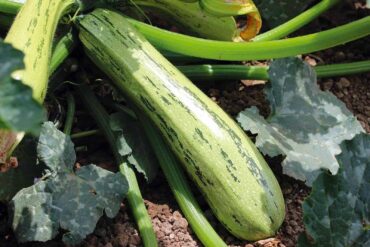
Pumpkins, squash, and gourds have enchanted gardeners and foodies for generations with their diversity in shapes, colors and flavors. Collectively referred to as “squash,” the Cucurbita genus has a rich history dating back over 8,000 years to Central and South America, and 4,000 years later was considered the primary agricultural crop of the ancients.
The indigenous people of the Americas included squash as a central component of the “Three Sisters” or “Trinity” planting system, which combined maize, beans and squash to create a mutually beneficial ecosystem.
Squash was introduced to Europe in the late 16th century and it quickly became a popular food crop there as well. Today, squash is enjoyed all over the world in both sweet and savory dishes.
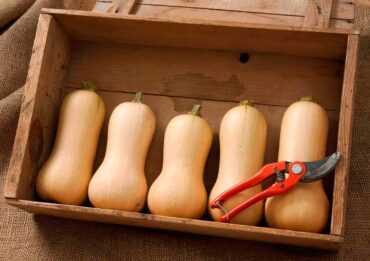
Some squash varieties are grown primarily for their ornamental value, while others are used for a variety of practical purposes and delicious dishes.
Popular Squash Species and Categories
Hybridization of squash over the centuries has provided us with a wealth of squash to choose from. Five edible species are in cultivation and grown for their flesh and seeds – C. pepo, C. maxima and C. moschata are the most popular. C. argyrosperma and C. ficfolia provide some interesting novelties.
Squashes can broadly be grouped into two categories:
- Summer squash are quick growing, early to harvest and usually eaten before the seeds mature. Their thin, soft skins make it possible to enjoy raw or cooked. C. pepo provides us with a wide range of interesting summer squash. Zucchini, yellow crookneck, chayote, cousa, pattypan, pumpkin and tromboncino are common types of summer squash.
- Winter squash are harvested later, can have odd shapes, oftentimes with tough or warty skins, and exhibit long shelf life. The flesh is traditionally enjoyed cooked, baked or roasted due to its tougher and more fibrous flesh. Winter squash comes primarily from C. maxima and C. moschata. Acorn, butternut, kabocha, spaghetti and turban are popular types of winter squash.
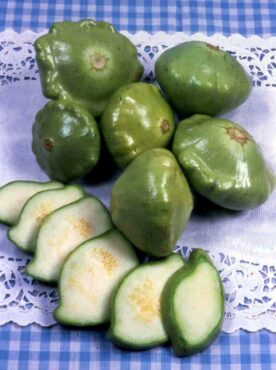
How to Grow Squash in the Garden
Sowing seeds
Squash is fast and easy to grow from seed.
- Direct-sow into the garden once soil temperatures are above 65ºF. Germination will not occur if soil temperatures are below 60ºF.
- Avoid the temptation to sow too early, as squash are a warm-season crop. Raised beds and mulch will help keep the roots warm.
- Seed depth: 1/2 – 1 inch
- Days to maturity: usually shown for direct sow. Subtract two weeks if transplanting.
Summer squash growing tips:
- Plant spacing: 12-24 inches (read labels for specifics on your variety)
- Row spacing: 5-6 feet
- Harvest: Most summer squash has the best fruit quality when harvested at 5-8 inches or smaller. Some varieties are suitable as baby vegetables. Frequent harvesting will keep the plant productive. Squash will increase in size rapidly. Inspect plants frequently for harvestable fruit.
- Storage: Summer squash is very perishable. Store in the refrigerator for three to four days.
Winter squash growing tips:
- Plant spacing: Bush types, 18-24 inches; vining types, 24-36 inches
- Row spacing: Bush, semi-bush and short vine types, 6 feet; vigorous vining types, 9 feet
- Harvest indicator: Fruits are full-sized and have a deep rich color and hard rinds that can’t be dented easily with a fingernail. Another indicator is that the “ground spot” changes color from yellow to cream, gold or orange.
- Harvest and curing: Cut the stem at least 2-4 inches from the fruit. A short or broken stem can lead to rot. Cure after harvest by keeping in a warm (80-90 F), dry location for a few days. Curing time will be dependent on the type. Delicata and acorn squash do not need curing but will not store as long as other types. Gently wash in a sanitizing solution such as 10 parts water to 1 part bleach.
- Storage: Store at 50-60 F with 50-75% humidity and good air circulation.
Pollination
Squash requires bees to move pollen from the male to the female flowers.
- A monoecious plant, squash can produce male and female blooms, and both produce nectar that attracts the bees.
- Male blooms are borne on long, narrow stems.
- Female blooms are found close to the stem of the plant.
- It takes as many as 12 visits to a female flower by pollen-laden bees to complete the pollination process.
- Timing is everything and there should be both male and female blooms open for pollination to occur.
- Incomplete pollination results in the appearance of fruits that turn from green to pale yellow and never size up.
- Oftentimes the immature fruit appears shriveled or woody. Remove these from the plant as soon as detected.
- Incomplete or lack of pollination can occur under windy conditions which make it difficult for the bees to move about productively or under cool, wet conditions which discourages bees from foraging.
- Planting ornamental flowers near squash can help attract bees to your vegetable garden.
- Most bees tend to fly within 30 feet of ground or tree level. If growing squash on a high balcony or rooftop, you could be out-of-range to attract bees. It may be necessary to hand-pollinate in this situation.
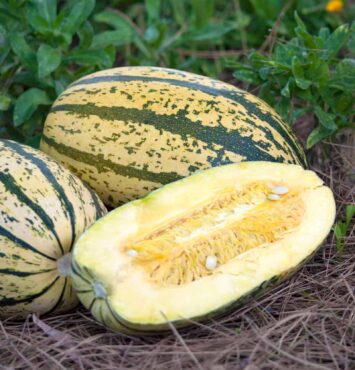
Common Pests and Diseases
- Spotted and striped cucumber beetle – the use of a floating row cover can be effective in controlling cucumber beetles. Remove all crop debris to discourage overwintering populations and practice crop rotation.
- Squash vine borer – causes plants to look wilted even when moisture is adequate. If possible, slice open the stem, remove the borer and destroy it.
- Squash (stink) bugs – feed on plant sap and fruit juices. Make sure to harvest often and remove overgrown fruit. Neem oil, insecticidal soap and homemade soap or coffee ground sprays work against adult squash bugs. Or if you are fast, handpick the bugs and drop them in a pail of soapy water. Crush the bronze to brick red colored eggs found on the stems and underside of leaves. Remove old vines and leaf litter from the garden where adult squash bugs overwinter.
- Powdery mildew – create good air circulation by providing wide spacing and eliminating weeds. Choose resistant varieties. Remove severely infected leaves. Squash will releaf.
- Fruit rots –as scab, fusarium fruit rot and anthracnose are common under wet conditions. Space plants apart, avoid wetting foliage and water early in the day so leaves can dry by nightfall.
- Bacterial wilt and virus – infections can be controlled by removing and destroying infected plants to prevent further spread. Choose resistant varieties.
Top 12 Gardening Tips for Squash
- Air movement around squash plants is critical for reducing disease and pest pressure. Don’t underestimate how large your squash plants may get. If planting in raised beds, plant squash on the ends or corners to allow them extra room.
- Squash plants require full sun, sufficient moisture and fertile, well-drained soil containing high amounts of organic matter. Water squash plants deeply and often.
- End-of-season cleanup including removing plant debris and leaves will reduce insect pressure from squash bugs and beetles the following year. These insects overwinter on leaves and plant debris.
- Squash requires bees for pollination. Plant bee-attracting ornamental flowers near or in your squash beds to increase bee activity.
- After planting, add a thick layer of mulch to help the roots stay cool and moist. Water plants deeply and allow time for foliage to dry before nightfall.
-
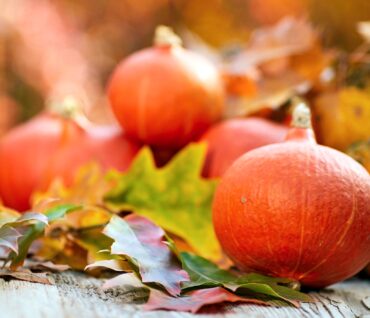
Sunshine Squash To keep summer squash plants tidy and clean, cut off and remove any damaged or yellowing leaves at the point of attachment. This will not hurt the plant. Squash will releaf in a short period.
- Controlling insects on squash can be challenging if you wait until the populations are large. Actions taken early in the summer will be rewarded later with improved harvests. Floating row covers are very effective at preventing squash bugs and beetles from attacking your plants.
- Get in the habit of checking the underside of leaves every few days to scout for eggs. Crush these with a rub or swipe of your fingers. Insects feeding on squash plants will weaken the plants and reduce productivity. Soapy water will kill adult squash beetles.
- Everyone enjoys the excitement of the first harvest of zucchini. However, summer squash are prolific producers and harvesting can get away from you quickly. For a small family, one to two squash plants are sufficient. You may wish to consider planting a wider range of varieties and types to enjoy the diversity the squash family offers in the garden and kitchen.
- When leaving on vacation, remove any zucchini fruit beginning to develop, otherwise you will return to oversized fruit that is not the best eating quality.
- Squash plants can easily be grown in larger patio containers. Select bush-type varieties. Harvest often at the proper stage to avoid oversized fruit from tipping over the pot.
- Vining squash with smaller fruits can easily be grown vertically on trellises or tunnel panels. Simply direct the vines upward and allow them to wind through the structure then easily harvest as they ripen. Here is how to make a squash tunnel reading nook.





























